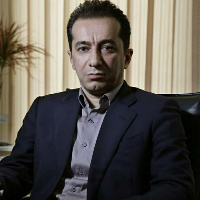The Analysis of the Antecedent and Consequences of destructive behaviors of employees with an emphasis on supporting theories(meta synthesis method)
In addition to human life, the suffering and pain caused by destructive behavior has penetrated into organizational life as well. The purpose of this research is to analyze the antecedent and consequent factors of destructive behavior of employees in the organization.
This research was conducted in the framework of a qualitative approach and using a meta-combination method with a systematic approach and the seven-step method of Sandelowski and Barroso. The statistical population under study includes all domestic and foreign researches published in the field of destructive behaviors, bad behaviors and supporting theories (from 2012 to 2022). In this regard, the keywords related to the purpose of the research were searched, and finally, 101 articles that met the inclusion criteria were analyzed using the three-stage coding method (open, central, selective) through MAXQDA software, were analyzed.
Based on the selected articles and surveys, 159 indicators were categorized in the form of 18 sub-dimensions and 6 main dimensions. The antecedents of destructive behavior of employees in three categories of individual factors (personality characteristics, suspicious attitude, collusive motivation, weakness perception, social rejection), group factors (repulsive leadership, humiliating atmosphere, friction-oriented attitudes, structural weakness), environmental factors (threat-oriented policies, upstream pressure and extra-organizational contracts) and the results of destructive behaviors with three categories of cognitive-emotional factors. Tendency to deviance, ambiguity, institutionalized pessimism) physical-motor factors (neuro-muscular tics, weak brain function and memory loss) behavioral factors (autocratic-authoritarian behavior, anti-productive behavior, harmful behaviors) were extracted.
Researchers in the field of organizational behavior can take positive and efficient steps by considering these factors in order to identify and reduce the destructive behaviors of employees.
-
Design and Presentation of a Smart Power Model in Governmental Organizations (Case Study: National Petrochemical Company of Iran)
Friedoun Kiani Nezhad, *, Maryam Rahmati
Journal of Management, Education and Development in Digital Age, Summer 2025 -
Designing a structural, human, and relational capital model with a human resource management practices approach
Pegah Madah Roudsari *, Davoud Kia Kojuri
Journal of Naja Human Resources, Spring 2025 -
Designing a pattern of toxic employee behavior with a focus on strategies and consequences Ports and Maritime Organization of Mazandaran Province
Zeinab Banisheykholslami *,
Journal of Maritime Management Science Studies, -
Identifying the causal, contextual and intervening factors affecting the toxic behavior of employees in the public sector
Zeinab Banisheykholslami *,
Journal of Maritime Management Science Studies,




